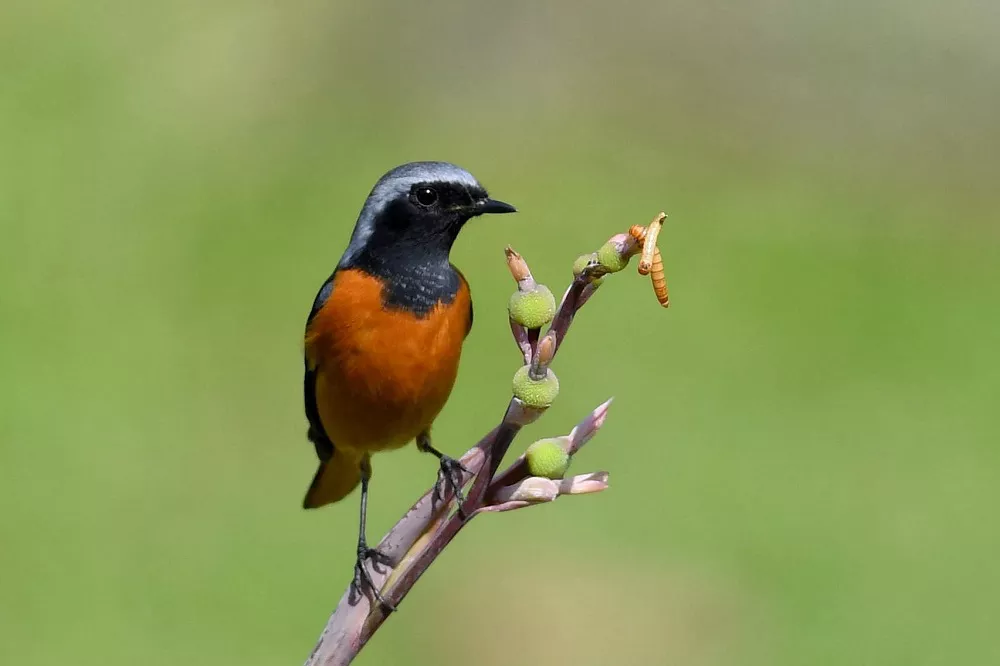The Daurian Redstart (Phoenicurus auroreus) is a small passerine bird that is widely distributed across Asia, from Russia and Mongolia to Japan and Korea. This species is known for its striking appearance, with a bright orange-red breast and belly and a dark gray-blue back and wings. Daurian Redstarts are commonly found in forested areas, but they can also be seen in parks, gardens, and other urban areas.
Like many small birds, Daurian Redstarts are insectivores, meaning they primarily feed on insects and other small invertebrates. They have a diverse diet that includes a wide range of insects, such as beetles, flies, and caterpillars, as well as spiders and other arthropods.
During the breeding season, Daurian Redstarts also feed on fruit and berries, which provide them with additional nutrients and energy. They have been known to consume small fruits like berries from shrubs and trees, such as wild cherry and dogwood, and they will also eat insects that are attracted to the fruits.
Daurian Redstarts are active foragers, and they use a variety of techniques to catch their prey. They often perch on low branches, rocks, or other objects to scan the surrounding area for insects, and they may also hover in mid-air or catch insects in flight. They have been observed using their tails to help them balance while perching, and they will also flick their tails rapidly to flush out insects hiding in foliage.
In addition to their insectivorous diet, Daurian Redstarts have been known to feed on small fish and amphibians in some areas, particularly during the non-breeding season. They have also been observed catching and eating small mice and other rodents. However, these non-insect foods are less common and make up only a small part of their overall diet.
Overall, the Daurian Redstart is a fascinating and adaptable bird that plays an important role in maintaining healthy ecosystems across Asia. Its diverse diet and foraging techniques make it a valuable predator of insects and other small invertebrates, and its striking appearance makes it a beloved species among birdwatchers and nature enthusiasts.


 Facebook
Facebook  Instagram
Instagram  Youtube
Youtube 